As your print shop grows, so do the demands on your equipment, staff, and workflow. If you're looking to scale efficiently and keep up with higher demand, an industrial-grade direct-to-film (DTF) printer can be a game-changer.
But before you take the plunge, it’s important to think through a few key factors to ensure you’re set up for success. Here are some of the most important considerations when adding a commercial DTF printer to your growing print shop.
1. Space Requirements
One of the first things to consider when upgrading to an industrial DTF printer is the space it'll require. These machines are significantly larger than the desktop or mid-size equipment models you may be used to in your shop. They need adequate room not only for the machine itself but also for materials, additional accessories, and proper ventilation.
Make sure to evaluate the layout of your shop and plan for the added equipment. A well-organized space can increase efficiency, while a cramped, poorly planned setup can lead to bottlenecks and operational headaches.
Ask:
- Do you have enough room for both the printer and storage?
- Can you optimize the flow of materials through the space to maximize productivity?
2. Power Needs
Another critical factor that shop owners often overlooked is your power supply. Commercial DTF printers consume more energy than standard printers, and you’ll need to ensure your electrical system can handle the increased load. Some machines may even require specialized outlets or voltage converters.
Check the power specifications of the DTF printer you’re considering, and consult with an electrician to determine whether your current setup can support it. If not, you may need to invest in electrical upgrades before the printer is even delivered. The last thing you want is downtime due to power issues.
3. Employee Training
Introducing a more advanced machine means your team will need to be properly trained. Industrial DTF printers often come with a variety of features that can increase efficiency and print quality, but they also have a learning curve. Investing in comprehensive training from your vendor is essential to get the most out of your equipment.
Whether you have an in-house team or you subcontract, everyone who touches the printer should understand how it works, how to maintain it, and what to do in case of a downtime issue. This includes software training, troubleshooting techniques, and maintenance best practices. Proper training reduces mistakes, extends the life of the machine, and ensures smooth production.
4. Workflow Integration
Scaling your print shop isn’t just about adding new equipment — it’s about making sure that equipment fits seamlessly into your existing workflow. How will the new DTF printer integrate with the rest of your production line? Does it complement your current machines, or will it require changes in the order of operations?
Consider how jobs will flow from one stage to the next. You’ll also need to think about how adding a DTF printer may impact your turnaround times. Can the rest of your team or equipment keep up with the increased speed and volume the DTF printer provides? Streamlining your workflow will ensure that the new printer boosts productivity rather than creating bottlenecks.
5. Maintenance and Support
Scaling your business means more equipment to maintain. Commercial DTF printers are powerful, but like any complex machine, they require regular upkeep. You’ll need to factor in the costs and time required for regular maintenance, such as cleaning print heads, replacing filters, and performing software updates.
Additionally, you should research the customer support options available from the manufacturer or distributor. Will you have access to reliable tech support? Do they offer remote assistance, or will you need on-site technicians if something goes wrong? Fast and effective support is crucial to keeping production moving smoothly.
6. Material and Supply Management
With an industrial DTF printer, you'll be able to produce at a much higher volume. That means you'll need to manage more supplies, from film rolls and ink to adhesives. Scaling up also means finding reliable suppliers who can deliver these materials quickly and consistently.
Consider establishing a system for tracking your inventory to avoid running out of essential materials during peak production times. A good relationship with your suppliers can help prevent delays that could slow down your operation.
7. Return on Investment (ROI)
Finally, when scaling your print shop, it’s important to think about the ROI. Larger DTF printers are a significant investment, and you’ll want to ensure that the increased capacity and quality translate into higher profits.
Before purchasing, calculate how long it will take to recoup the cost of the machine through additional orders. Consider factors like increased production speed, new markets you can enter, and potential savings on labor or materials. A clear understanding of your ROI will help you make a sound financial decision and justify the investment. A good vendor will be on hand to recommend the best machine for your customers' needs.
Get Started Today
Scaling your print shop with an industrial DTF printer can transform your business, allowing you to take on more orders, improve quality, and expand your offerings. However, it's crucial to consider the space, power needs, employee training, workflow integration, maintenance, and material management before making the leap. By planning ahead, you’ll ensure that your new equipment helps your shop run more efficiently and profitably.If you're ready to take your print shop to the next level, choosing the right industrial DTF printer can be the key to unlocking new opportunities. Browse our website and reach out so we can match you with the right printer for your needs.






